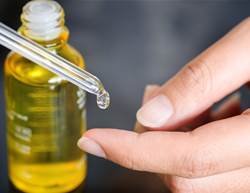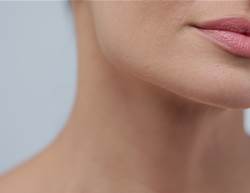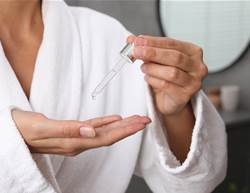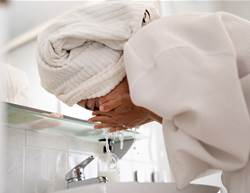There you were, innocently rubbing your head or brushing your hair when—ouch—you hit a weird little bump that seriously hurts. Just like the breakouts that can appear on your face, back or chest, scalp acne can pop up anytime, for anyone.
Scalp acne can develop along your hairline or beneath your hair, making combing, brushing or even shampooing painful and frustrating. So, what can you do? Read on to learn what causes scalp acne, how to treat it, and—most importantly—how to stop it from coming back.
What is scalp acne?
Scalp acne refers to pimples and inflamed bumps that develop on the scalp, says board-certified dermatologist Dr Mona Gohara. “These can range from small, itchy pustules to larger, painful cysts.” While similar to other forms of acne, scalp acne is influenced by hair and scalp conditions, she explains.
“It’s essentially acne on the scalp,” adds dermatologist Dr Peterson Pierre. “It can present as whiteheads, blackheads, pimples and cysts.” Like acne on other areas of the body, it can be tender and inflamed, making it uncomfortable to manage.
What causes scalp acne?
Like acne elsewhere on the body, scalp acne can have multiple triggers. According to Dr Gohara, these are some of the most common causes:
- Excess oil production – Overactive sebaceous (oil) glands mix with dead skin cells and sweat, clogging hair follicles.
- Product build-up – Hair products such as gels or dry shampoos can leave residue that clogs pores.
- Hormonal changes – Puberty, menstruation and stress can increase oil production, leading to breakouts.
- Fungal or bacterial infections – Infections of the hair follicles, such as folliculitis, can cause inflammation and pimples.
- Sweat and friction – Wearing hats or helmets for long periods can trap sweat, leading to blocked pores and irritation.
- Dietary factors – High-glycaemic foods and dairy may contribute to excess oil production and inflammation.
How to treat scalp acne
First, avoid making the condition worse. “Don’t pick or scratch,” warns Dr Gohara. “Picking at scalp acne can lead to scarring or secondary infection.” She also recommends using gentle hair tools and avoiding brushes or combs that may irritate the scalp further.
“Your scalp is an extension of your skin,” says Dr Gohara. Washing your hair regularly removes sweat, oil and product build-up. She also suggests avoiding heavy or oily styling products that can clog pores. However, like acne elsewhere, maintaining good hygiene alone may not be enough to clear breakouts.
Fortunately, several treatment options can help. Over-the-counter (OTC) medicated shampoos are one of the easiest ways to manage scalp acne, says Dr Gohara. She recommends trying:
- Salicylic acid shampoos – Help exfoliate dead skin cells and unclog pores.
- Ketoconazole or zinc pyrithione shampoos – Effective for fungal-related scalp acne or dandruff.
If medicated shampoos don’t work, topical treatments may be useful, though they can be tricky depending on hair thickness, says Dr Pierre. According to Dr Gohara, these options may help:
- Benzoyl peroxide (2.5%-5%) – Can be applied directly to affected areas (but may bleach hair, so use with caution).
- Topical antibiotics – Clindamycin gel can help reduce bacterial infections.
If scalp acne persists, oral medications may be needed. A doctor may prescribe:
- Oral antibiotics – To target bacterial infections.
- Hormonal therapy – Such as birth control pills to help regulate oil production.
- Isotretinoin (Accutane) – Used in severe cases.
How to prevent scalp acne
To keep painful scalp breakouts at bay, regular hair washing is key to preventing oil build-up, says Dr Gohara. She also recommends choosing hair care products labelled ‘non-comedogenic’ or ‘oil-free’ to minimise clogged pores. If your scalp tends to be oily, shampoos containing tea tree oil or glycolic acid may also help, adds Dr Pierre.
Dr Gohara also advises limiting the use of hats and helmets. “If wearing headgear, ensure good airflow and clean liners regularly to prevent sweat build-up,” she says.
And while it’s easier said than done, stress management is crucial, as hormonal fluctuations caused by stress can exacerbate acne, warns Dr Gohara.
When to see a doctor about scalp acne
If over-the-counter remedies haven’t worked, it’s time to see a dermatologist, says Dr Pierre.
More specifically, if you’re dealing with chronic, persistent or painful breakouts, Dr Gohara advises making an appointment. “Large, painful cysts or nodules may require prescription medication or drainage by a professional,” she adds.
Lastly, watch for signs of infection, such as fever, spreading redness or discharge. If you notice any of these, see your doctor as soon as possible, urges Dr Gohara.









